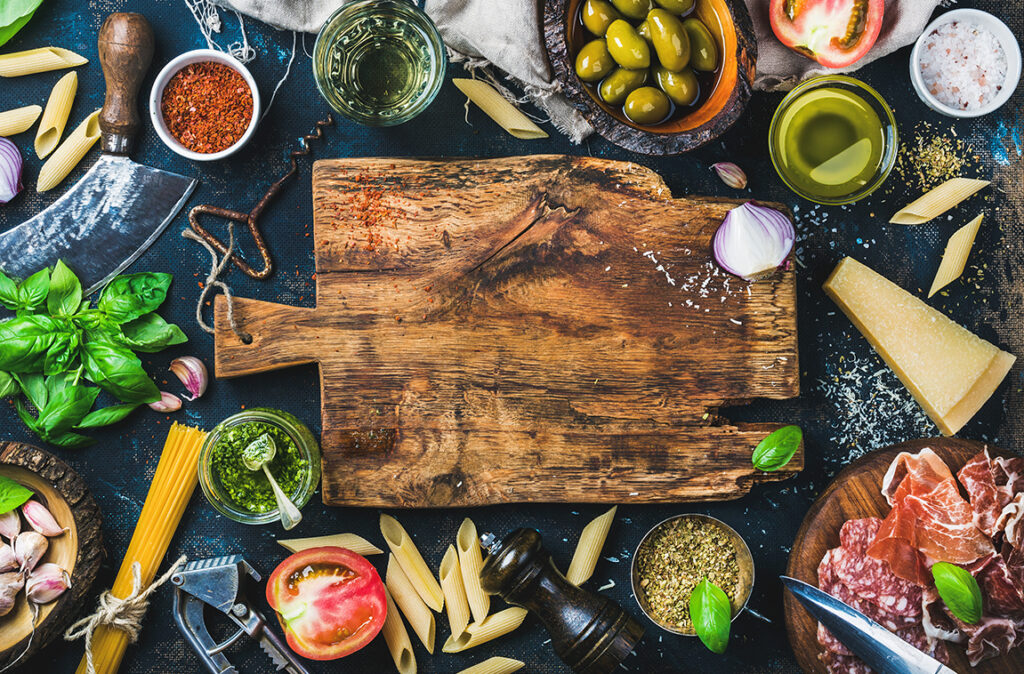Discovering the Rich and Flavorful Italian Food History
Italian cuisine is world-renowned for its delicious flavors, fresh ingredients, and simple yet sophisticated dishes. From the crisp, wood-fired crust of a Margherita pizza to the tender, handmade pasta of a classic spaghetti Bolognese, Italian food has captured the hearts and palates of people all over the world. But how did Italian cuisine evolve into the beloved culinary tradition it is today? In this article, we’ll trace the history of Italian food, from its beginnings in Ancient Rome to its contemporary status as a global gourmet delight.
Table of Contents
The Beginnings of Italian Food in Ancient Rome
The roots of Italian food can be traced back to Ancient Rome, where wealthy citizens enjoyed elaborate feasts featuring a wide variety of ingredients and flavors. Roman cookbooks, which were widely read and respected, featured elaborate recipes that showcased the empire’s passion for food. Some of the classic dishes that were enjoyed in Ancient Rome, like stuffed dormice and a sauce made with honey and wine, have not survived to the present day, but the Roman love of fresh, seasonal ingredients and simple yet flavorful dishes lives on in modern Italian cuisine.
Regional Diversity Shapes Italian Food
As the Roman Empire declined and the medieval period began, Italy became a patchwork of city-states and regional kingdoms, each with its own unique culture and food. This regional diversity is still evident in Italian cooking today, with dishes like Neapolitan pizza, hearty stews from Tuscany, and seafood-based cuisine from the coastal regions all having distinct regional roots. For example, pasta is a staple of Italian food, but the way it is prepared and served varies greatly from region to region, from the wide, flat noodles of Emilia-Romagna to the thin spaghetti of southern Italy.
The Renaissance and the Rise of Italian Cuisine
The Renaissance was a time of great cultural and culinary awakening in Italy, and it had a profound impact on Italian Food History. As the country emerged from the darkness of the medieval period, artists, intellectuals, and culinary experts rediscovered the rich cultural heritage of Ancient Rome and the classical world. This renewed interest in classical cuisine led to the development of new recipes, cooking techniques, and ingredients, and helped to establish Italy as a center of culinary excellence. Some of the most iconic dishes of Italian food, like tiramisu and risotto, have their origins in this period of culinary innovation.
The Influence of Geographic and Climatic Factors on Italian Cuisine
The diverse geography and climates throughout Italy have significantly influenced the development of its distinctive regional cuisines. The north of Italy, dominated by the Alps and Apennine Mountains, has a cooler climate ideal for dairy farming, resulting in the production of high-quality cheeses like Parmigiano Reggiano and Gorgonzola. The coastal regions with their warm Mediterranean climate offer abundant seafood, influencing the cuisine with dishes like Cioppino, a mixed seafood stew, and various pasta dishes featuring shrimp, clams, or mussels. The southern regions, including Sicily and Calabria, have long, hot summers perfect for olive and citrus farming, shaping the region’s cuisine around these ingredients.
The Role of Religious and Festive Traditions in Italian Food History
Religious and festive traditions have greatly influenced Italian Food History, with many dishes linked directly to particular holidays or celebrations. For instance, during Christmas, families come together to make special meals such as “Feast of the Seven Fishes,” a tradition that includes seven different seafood dishes. Easter, another significant holiday, is celebrated with traditional foods like Lamb or “Pizza di Pasqua,” a cheese bread. Fasting days, as instructed by the Catholic Church, have also influenced Italian food by encouraging the use of simple, plant-based ingredients and fish over meat. These traditions have not only shaped the Italian culinary landscape but also helped reinforce the country’s rich cultural heritage.
Impact of Trade and Exploration on Italian Food History
The age of exploration and trade had a profound impact on Italian Food History, introducing many new ingredients that would eventually become staples in the kitchen. One of the most notable introductions was the tomato, brought to Europe from the New World in the 16th century. Initially thought to be poisonous, it wasn’t until the 19th century that tomatoes became widely used in Italian cooking, particularly in the south, where the climate was perfect for growing this fruit. Corn and potatoes, also New World crops, found their way into Italian cuisine as polenta and gnocchi, respectively. Spices such as black pepper and cinnamon, traded from the East, found their way into many Italian dishes, contributing to the depth and complexity of flavors that we associate with Italian cuisine today.
The Evolution of Italian Wine and Its Role in Italian Cuisine
The history of wine in Italy stretches back thousands of years to the Greeks and Etruscians, but it was the Romans who expanded viticulture across the country, developing methods of wine production that are still used today. Each region of Italy boasts its own distinctive type of wine, from the Nebbiolo grapes used in Barolo and Barbaresco in Piedmont, to the Sangiovese grapes of Chianti in Tuscany, and the white Trebbiano grapes grown throughout the country. Today, wine is considered an essential part of Italian food, intended to complement the flavors of the meal. The concept of ‘terroir’ – the idea that the environment imparts a character to the wine – is deeply ingrained in Italian wine culture, tying together the food, the wine, and the region in a holistic expression of Italian cuisine.
The Influence of Italian Immigrants on American Cuisine
During the late 19th and early 20th centuries, large numbers of Italian immigrants arrived in the United States, bringing with them their love of food and their traditional cooking methods. Despite facing many challenges in their new home, Italian immigrants were able to establish vibrant and thriving communities, and their cuisine quickly became popular with both their fellow immigrants and the wider American public. Today, Italian-American food is a beloved and integral part of American food culture, featuring dishes like spaghetti and meatballs, chicken parmesan, and lasagna.
Contemporary Italian Food – A Fusion of Tradition and Innovation
Contemporary Italian food continues to evolve and change, but it remains true to its roots, drawing on classic techniques and ingredients to create new and exciting dishes. The emphasis on fresh, seasonal ingredients, simple preparation, and bold flavors continues to define Italian cooking, and innovative chefs are always experimenting with new ingredients and techniques to push the boundaries of what is possible.
One of the most exciting trends in contemporary Italian cuisine is the fusion of traditional Italian food with other culinary traditions from around the world. This has led to the creation of unique dishes that combine classic Italian flavors with elements of Asian, Middle Eastern, and Latin American cooking, among others. Some examples of these innovative dishes include pizza topped with spicy Thai chicken, pasta infused with Indian spices, and risotto flavored with exotic herbs and spices.
Despite its ongoing evolution, Italian food remains one of the world’s most beloved and respected culinary traditions. Whether you’re enjoying a classic Margherita pizza, savoring a hearty bowl of pasta Bolognese, or sampling a contemporary fusion dish, you can be sure that you’re experiencing a rich and flavorful tradition that has been honed over centuries. So next time you sit down to enjoy a delicious plate of Italian food, take a moment to appreciate the rich history that has shaped this amazing culinary tradition.
Want to learn more about Italian Food History? Check out our course on Udemy where you will learn 11 traditional Italian dishes, including the history of each, like Parmigiana, Lasagne, and Risotto. Join us on Udemy!


My family’s in town for the weekend, and I’m looking for a spot where we can all gather for a leisurely Sunday brunch. Italian food always brings everyone together, so finding a great Italian restaurant with brunch options would be ideal for catching up and enjoying good food together. Let me share with them how Italian cuisine has its origins in ancient Rome when affluent residents feasted on extravagant meals that included a broad range of tastes and ingredients. This will blow their minds, for sure.